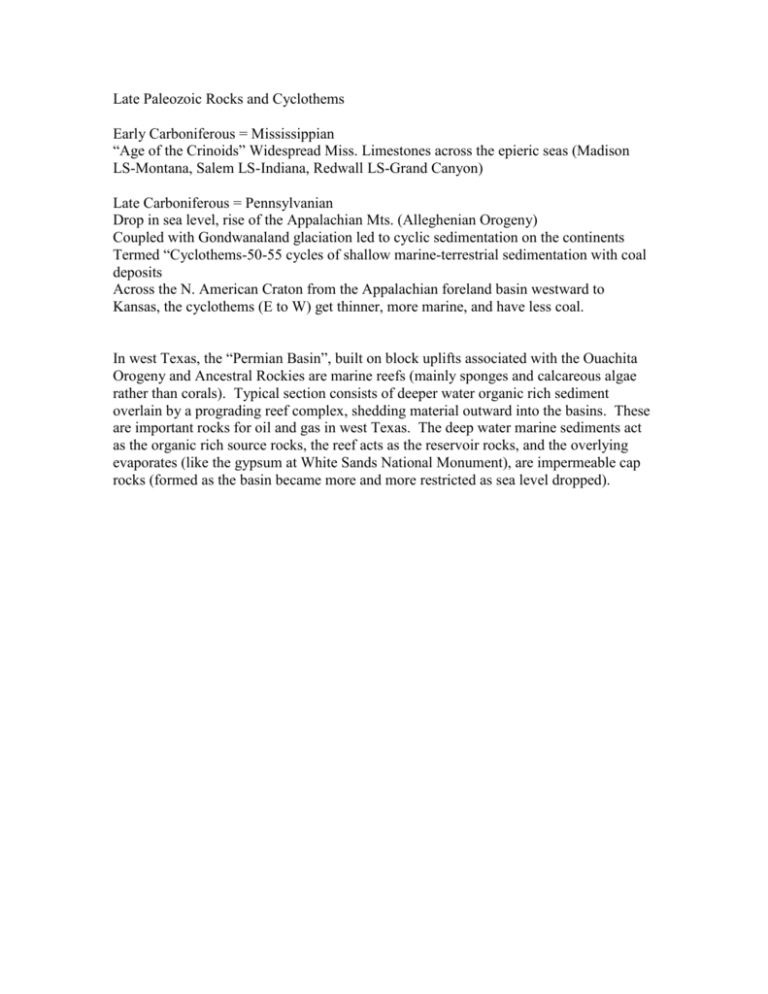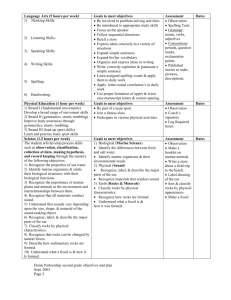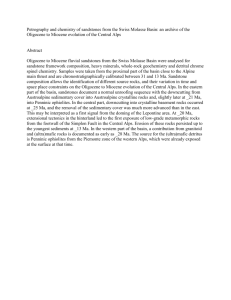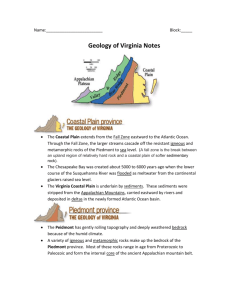Late Paleozoic Rocks and Cyclothems
advertisement

Late Paleozoic Rocks and Cyclothems Early Carboniferous = Mississippian “Age of the Crinoids” Widespread Miss. Limestones across the epieric seas (Madison LS-Montana, Salem LS-Indiana, Redwall LS-Grand Canyon) Late Carboniferous = Pennsylvanian Drop in sea level, rise of the Appalachian Mts. (Alleghenian Orogeny) Coupled with Gondwanaland glaciation led to cyclic sedimentation on the continents Termed “Cyclothems-50-55 cycles of shallow marine-terrestrial sedimentation with coal deposits Across the N. American Craton from the Appalachian foreland basin westward to Kansas, the cyclothems (E to W) get thinner, more marine, and have less coal. In west Texas, the “Permian Basin”, built on block uplifts associated with the Ouachita Orogeny and Ancestral Rockies are marine reefs (mainly sponges and calcareous algae rather than corals). Typical section consists of deeper water organic rich sediment overlain by a prograding reef complex, shedding material outward into the basins. These are important rocks for oil and gas in west Texas. The deep water marine sediments act as the organic rich source rocks, the reef acts as the reservoir rocks, and the overlying evaporates (like the gypsum at White Sands National Monument), are impermeable cap rocks (formed as the basin became more and more restricted as sea level dropped).











